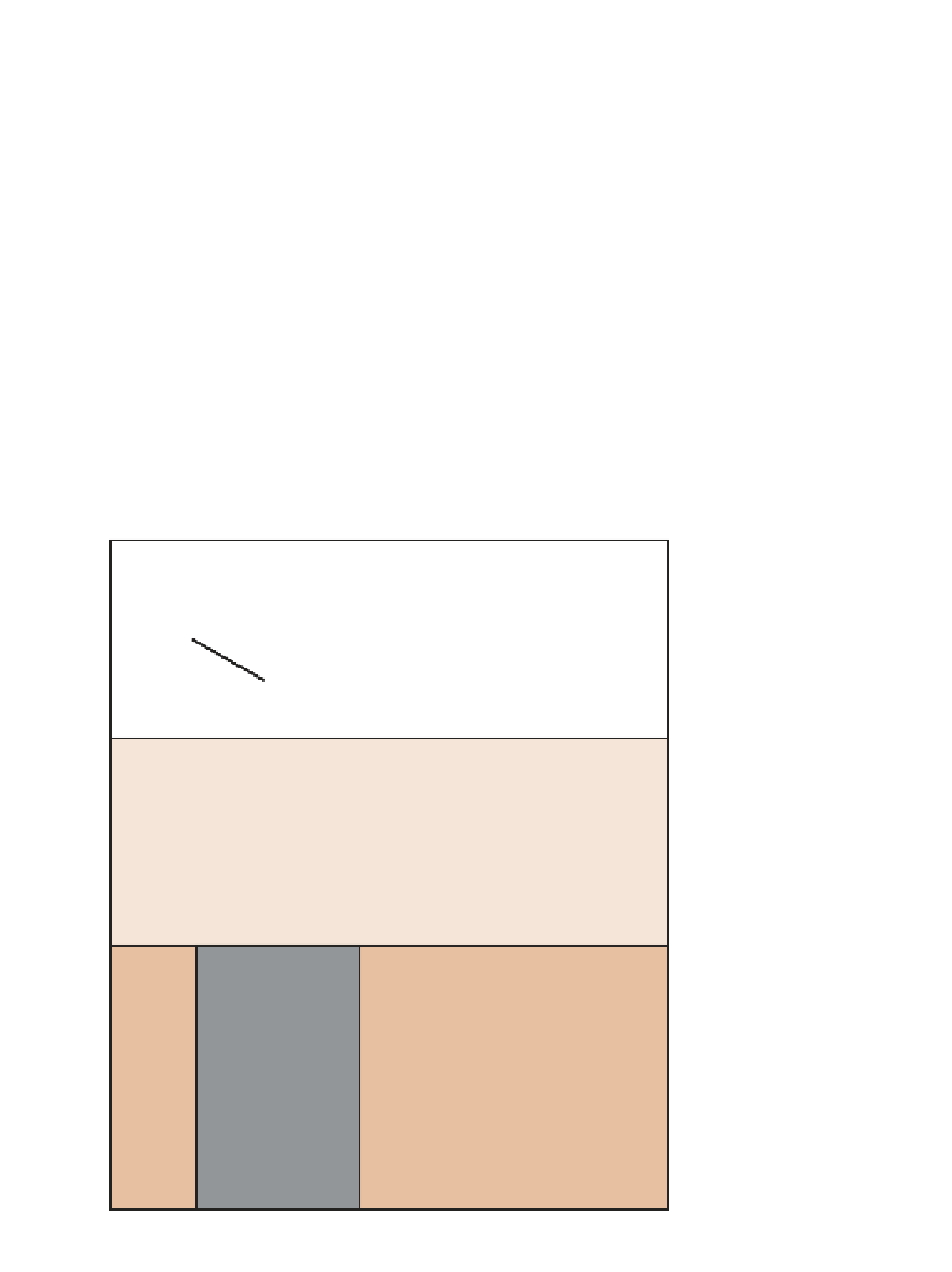Geoscience Reference
In-Depth Information
the depth to the permafrost table, thus producing a deeper,
saturated, active layer where decomposition under the
anaerobic conditions during summer will release methane
(CH
4
) and unsaturated hydrocarbons like ethylene and
ethane into the atmosphere. Where drainage is good, the
better aerated upper part of the active layer will allow
aerobic decomposition of soil organic matter, producing
carbon dioxide and heat from respiration by micro-
organisms. Thus positive feedback emits carbon dioxide,
methane and heat into the atmosphere, and computer
simulations show that this will significantly increase the
rate of permafrost thawing (
Figure 28.8
).
the changes are likely to be so dramatic and far-reaching.
Three aspects are discussed here. First there is the direct
impact of increased temperature and carbon dioxide on
photosynthesis and plant growth, i.e. net primary
productivity (NPP). Second, there are predictions for the
changing distributions of biomes and ecosystems, and the
changing ranges of individual species. Third, efforts are
being made to build up large data sets of environmental
parameters and biological taxa (e.g. trees, insects, birds,
mammals) in order to monitor better any changes in
ecosystem composition over time. Knowledge of what
has changed, where it has changed, and how quickly it has
changed, is critically important. A UK example of this is
the Environmental Change Network (ECN), a long-term
integrated monitoring programme, which has been
gathering data since 1992 on 250 variables at sixteen lakes,
twenty-six rivers and twelve terrestrial sites throughout
Impacts on vegetation and wildlife
The impacts of global warming on the biosphere have
aroused much interest among biogeographers because
O
2
CO
2
CH
4
Heat
Ground surface
Respiration
Aerated
Zone
Heat
Water Table
Carbon
Waterlogged
Zone
Melting
Permafrost Table
Frozen
Carbon
Permafrost


























































